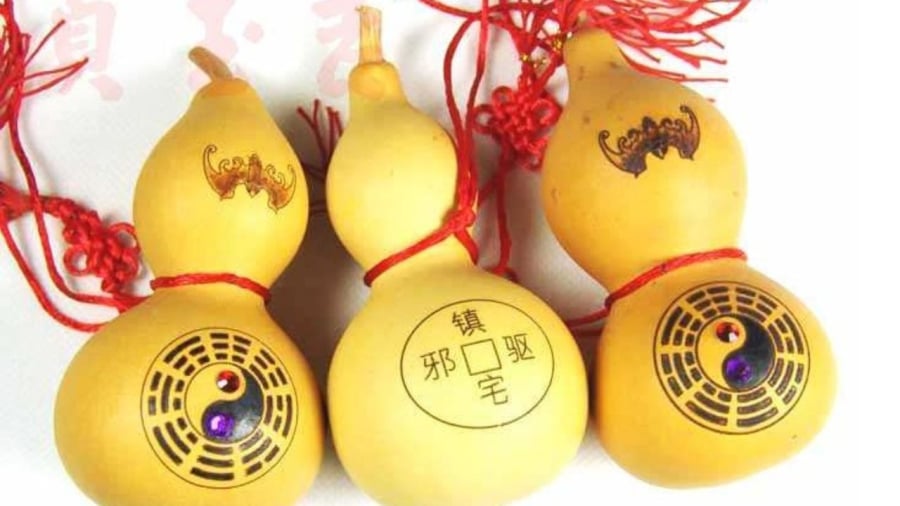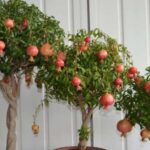The Benefits of Growing Gourd Vines in Front of Your House
The gourd vine is a traditional plant often found in front of Vietnamese homes. Its trailing vines provide shade, while the fruit is refreshing and delicious, and the leaves can be eaten like squash leaves. Growing gourds offers a bounty of benefits.
Gourds are also believed to possess special Feng Shui properties, particularly the calabash gourd. A thriving vine with abundant gourds symbolizes prosperity and a large family. In Vietnamese, the word for gourd sounds similar to “phúc lộc,” which translates to “blessings and prosperity,” thus enhancing its auspicious significance.

Gourd Vines Offer Fruit, Shade, and Feng Shui Benefits
The gourd vine is believed to attract blessings and prosperity, with its abundant fruit symbolizing wealth and nobility. The calabash gourd, in particular, is a symbol of abundance and is often hung in front of homes. Its unique shape, with a wide body and narrow neck, is believed to capture positive energy while retaining it within, allowing only a small amount to escape.
In folk belief, placing gourds on windowsills is thought to attract wealth, with the saying, “Bầu đè cửa sổ, tiền lăn ra ngoài,” translating to “Gourds pressing on the window, money rolling out.” Having a thriving gourd vine is seen as a sign of prosperity and fertility, with the potential for an abundance of grandchildren.
Gourds are also symbolic of longevity and vitality. The trailing vines are believed to bring positive energy into the home, and the gourd is often associated with the God of Longevity in traditional culture, further emphasizing its role as a lucky charm.
Additionally, the gourd vine is thought to ward off negative energy and protect the inhabitants of the home. In traditional belief, growing or hanging gourds is said to attract wealth and prosperity, as well as bless the family with many descendants, ensuring their longevity. It is also believed to bring peace and protection to the household.
Gourds are a nutritious vegetable, with edible leaves, shoots, and fruits. They are a refreshing and tasty treat during hot weather. A gourd vine also provides shade, making it a practical and aesthetically pleasing addition to any home.

The Calabash Gourd: A Popular Feng Shui Symbol
Tips for Successful Gourd Growing
Gourds are seasonal plants, and it is best to plant them in the spring. They will flower in the summer and bear fruit in late autumn to early winter before dying off, ready for the next season’s seeds.
You can grow gourds from seeds or buy young plants. Typically, gourd seeds can be sown in late February to early March, and with the right temperature, they will germinate within 7 to 10 days.
Calabash gourds are popular for their decorative and symbolic value, while long and star-shaped gourds are favored for their culinary uses.
When growing gourds, it is essential to provide ample sunlight and ensure the plants receive enough nutrients. Gourds thrive in well-drained, fertile soil, and with the right conditions, their vines can grow up to several meters long.
Initially, there is no need to fertilize as gourds grow rapidly. Excessive fertilization can lead to lush foliage but few flowers. Avoid using nitrogen-rich fertilizers before fruiting, or you may end up with abundant foliage but no fruit.
Gourds can also be grown in pots or containers, provided they are large enough and well-maintained. They can be trained to climb trellises, balconies, walls, or rooftops, adding a decorative touch to your home. However, ensure you provide adequate support and care for the plants to bear fruit.
If you are unable to grow gourds, consider using dried gourds as Feng Shui cures. Hanging a dried gourd above your bed is believed to promote restful sleep and bring good luck and wealth, while warding off negative dreams.
Placing a dried gourd by the front door is thought to attract wealth and dispel bad luck.
Hanging a gourd by the window is believed to attract positive energy and keep negative forces at bay.
Calabash gourds with red ribbons are popular decorations in living rooms, believed to attract good fortune.
*Information based on traditional beliefs
The Golden Spot to Place Your Tiger Jaws: Luck Rolls In, Money Follows Suit
The Snake Plant, a striking and elegant addition to any home, boasts a multitude of benefits that set it apart from other houseplants. Its stately form exudes sophistication, while its air-purifying abilities and toxin-absorbing properties make it a natural wonder. Feng shui enthusiasts also revere this plant for its positive influence on the energy of a space, with its placement dictating specific auspicious meanings.
Feng Shui to Plant a Crape Myrtle Tree in Front of the House?’>Is It Good for Family Feng Shui to Plant a Crape Myrtle Tree in Front of the House?
The Queen of the Night, the enigmatic Epiphyllum oxypetalum, is a captivating cactus with an alluring presence. With its ethereal beauty and enchanting blooms, it captivates those who encounter it. This exotic epiphyte, native to the tropical rainforests of South America, has earned its regal moniker due to the exquisite nature of its nocturnal blossoms. Under the cloak of darkness, the Queen of the Night reveals her true splendor, unfurling her delicate petals to the moonlight in a breathtaking display of nature’s magic.






































